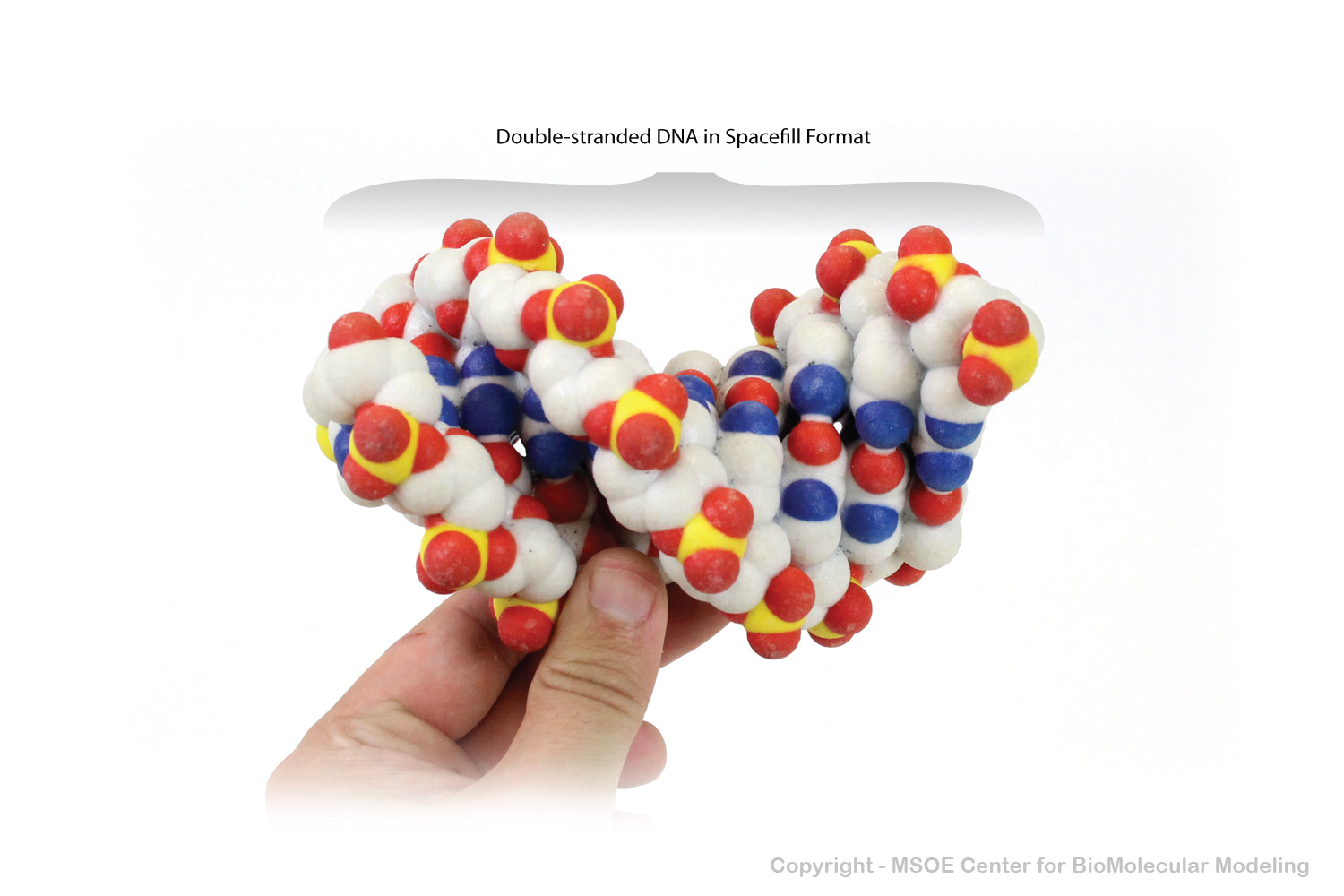
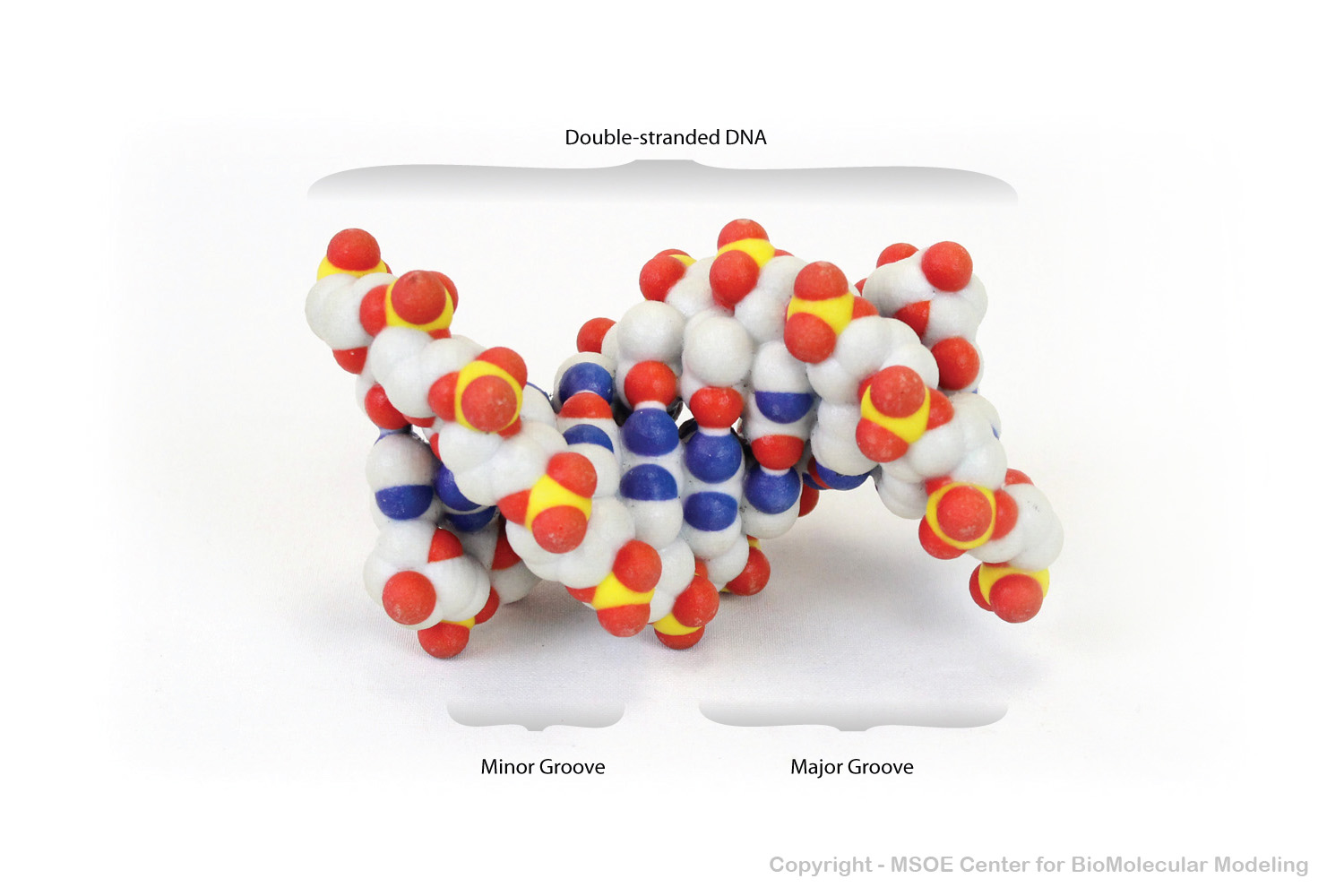
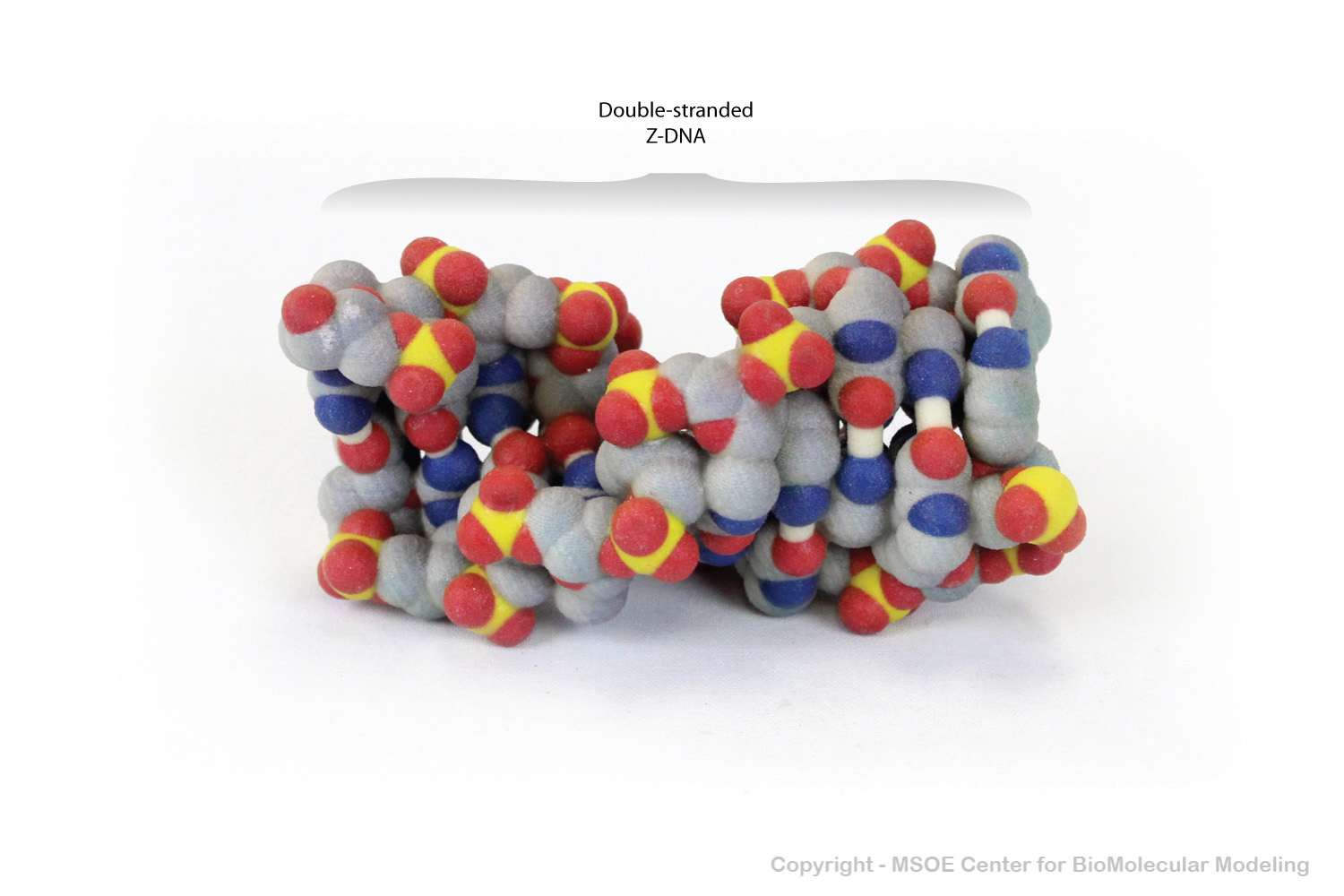
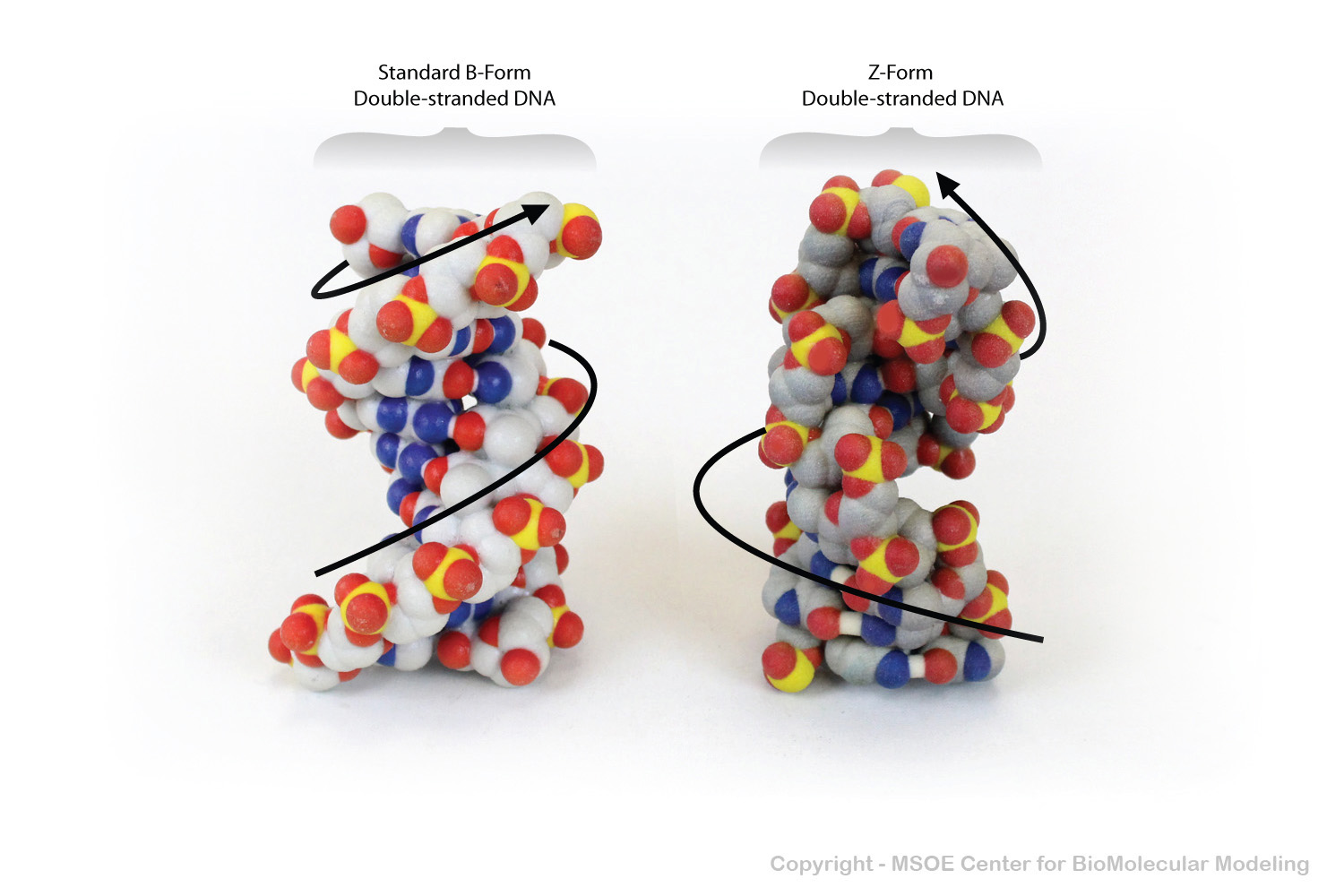
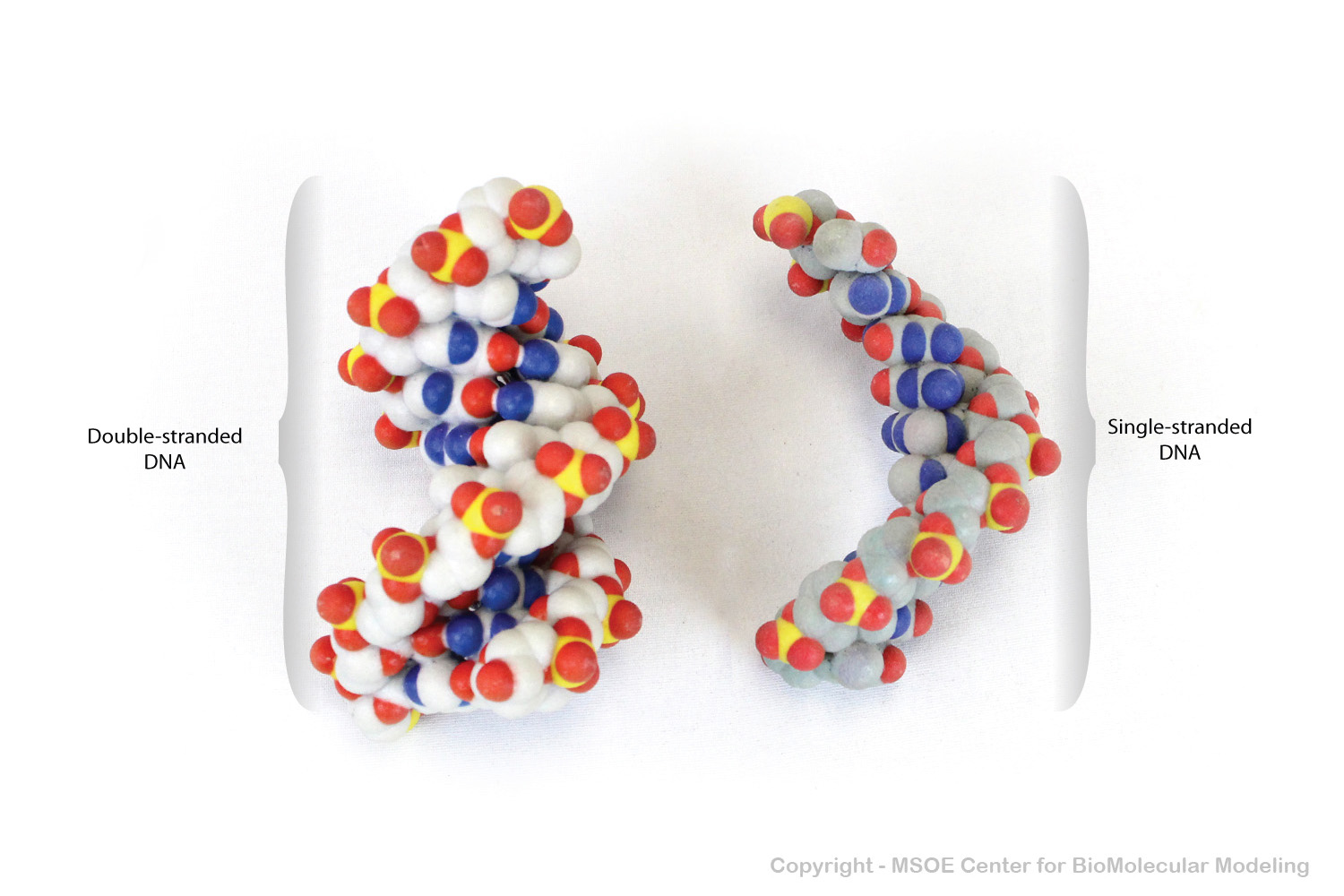
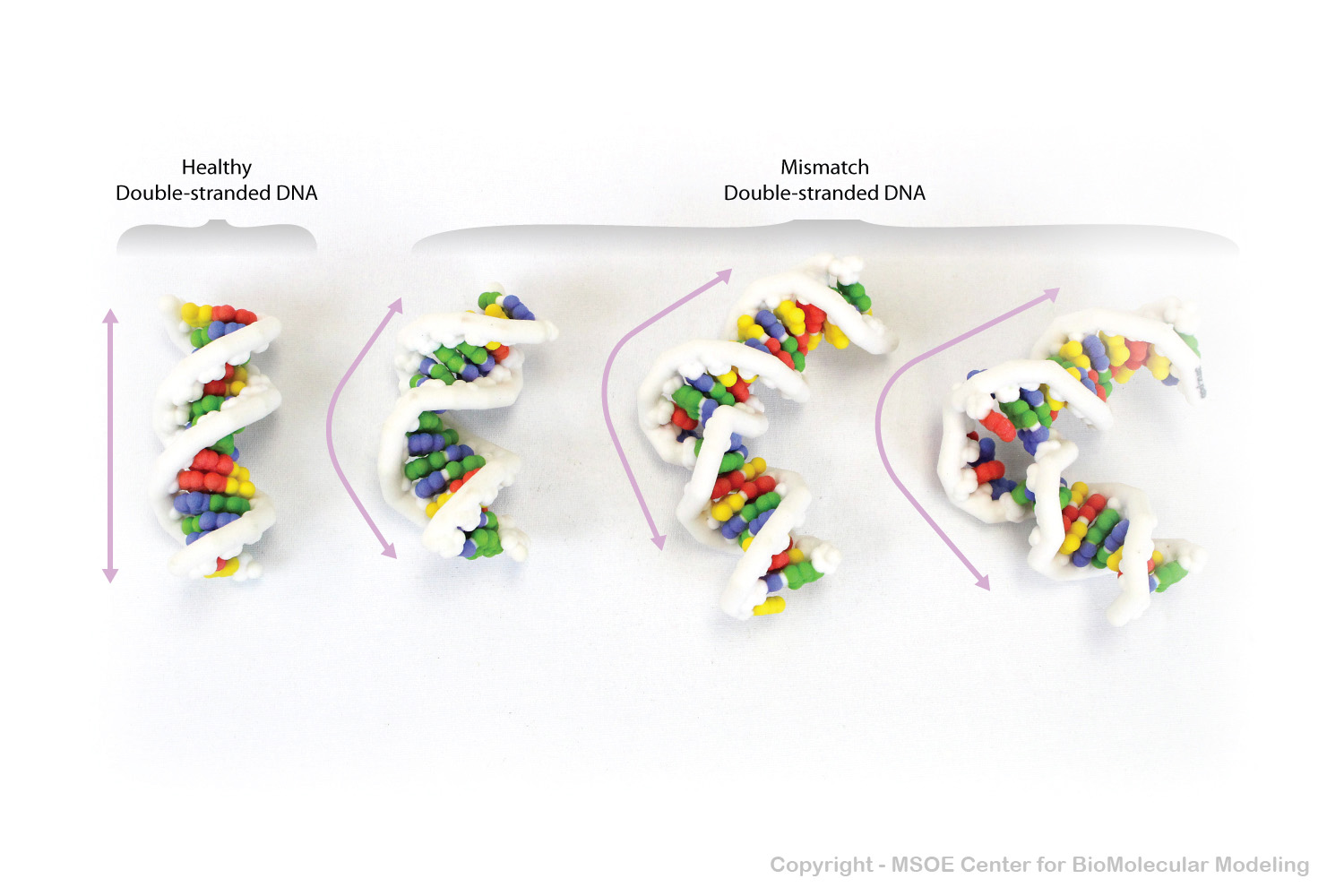
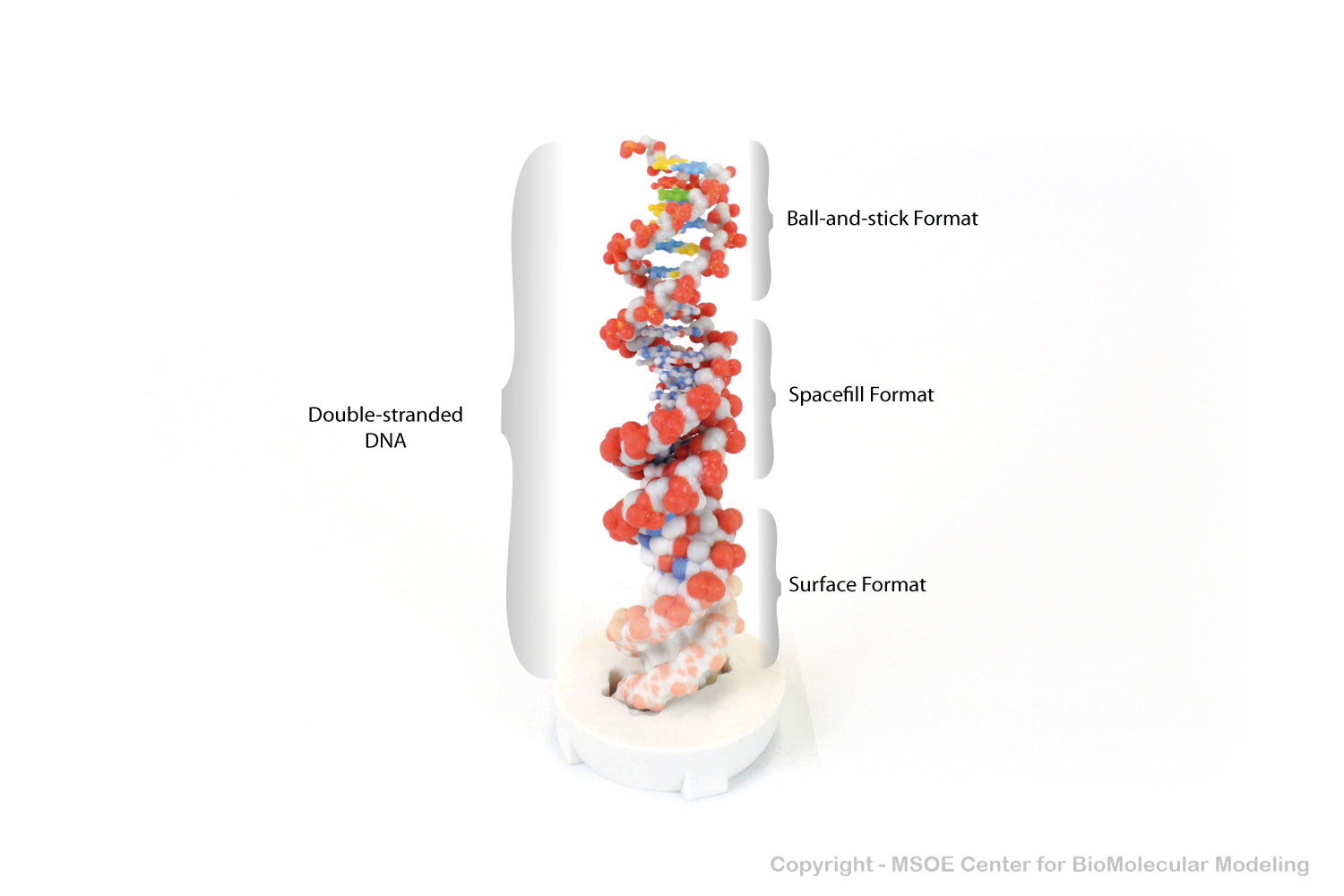
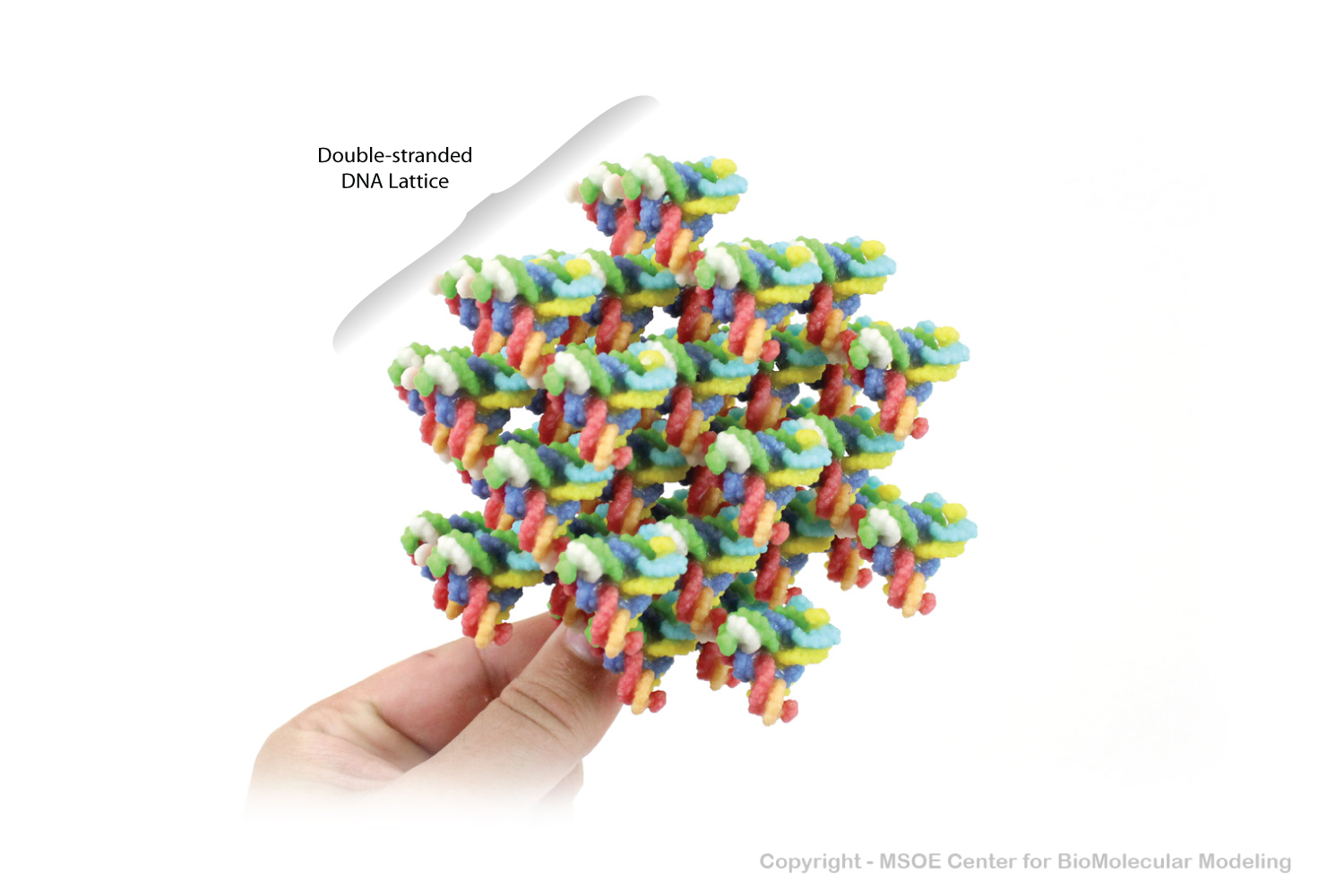
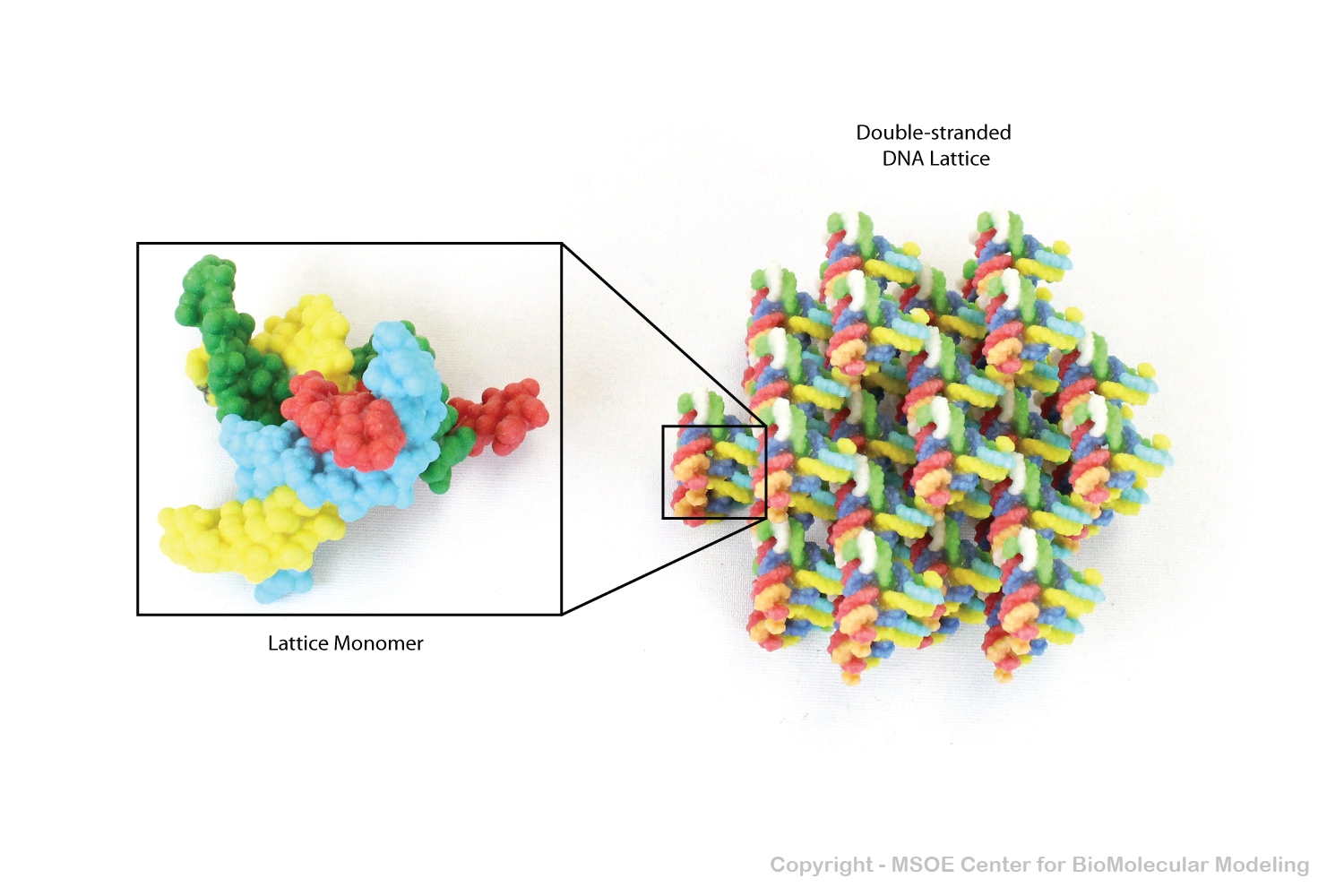
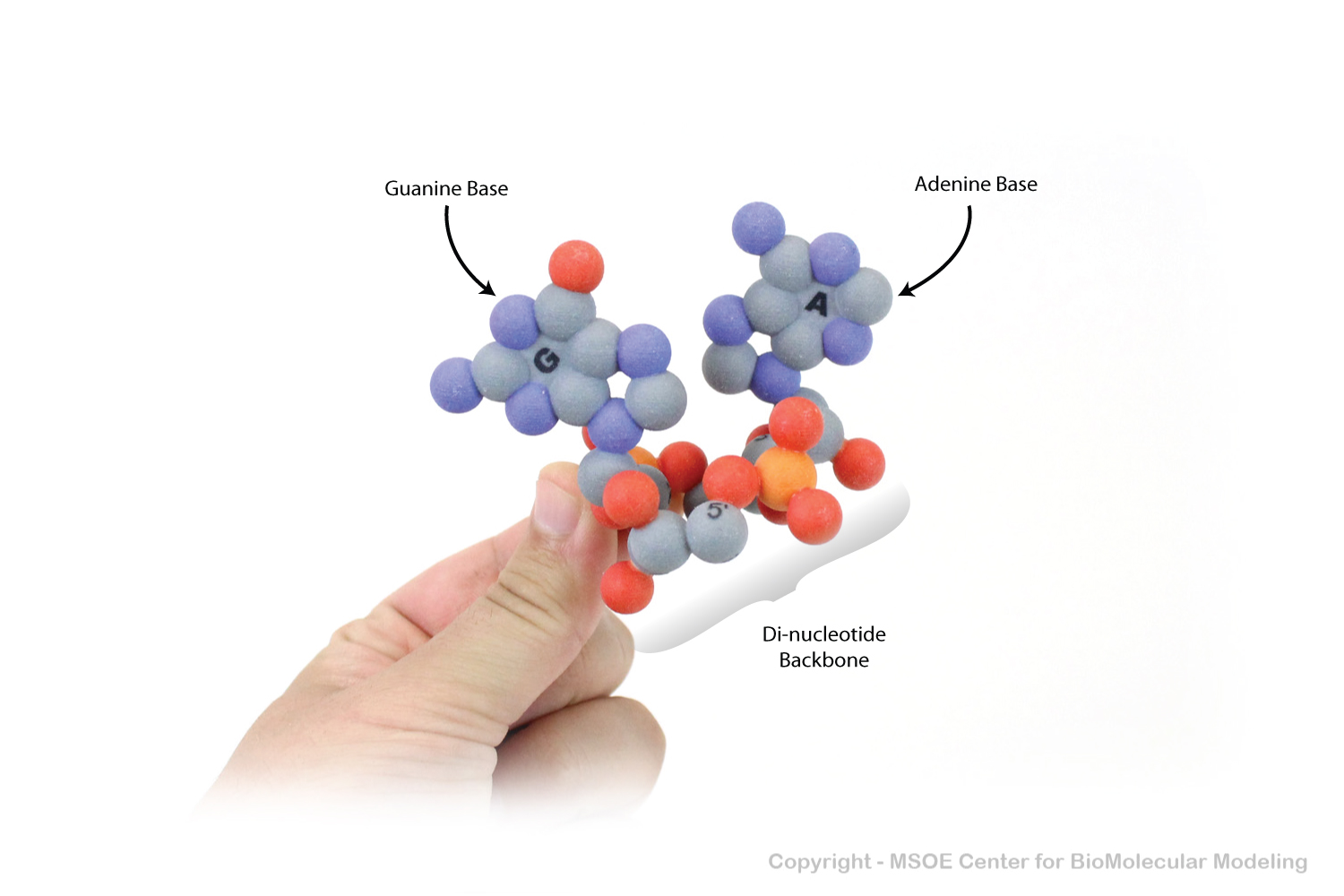
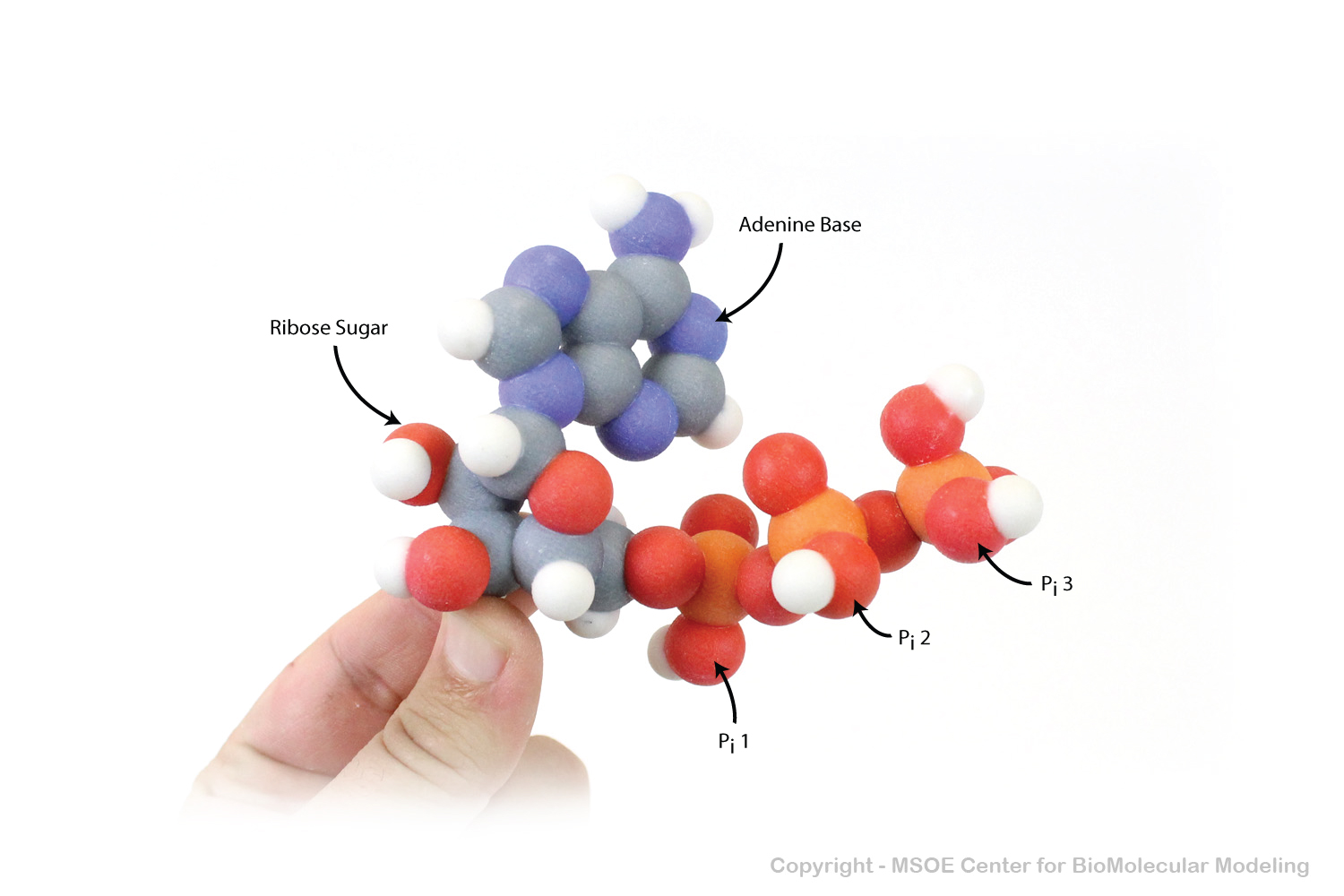
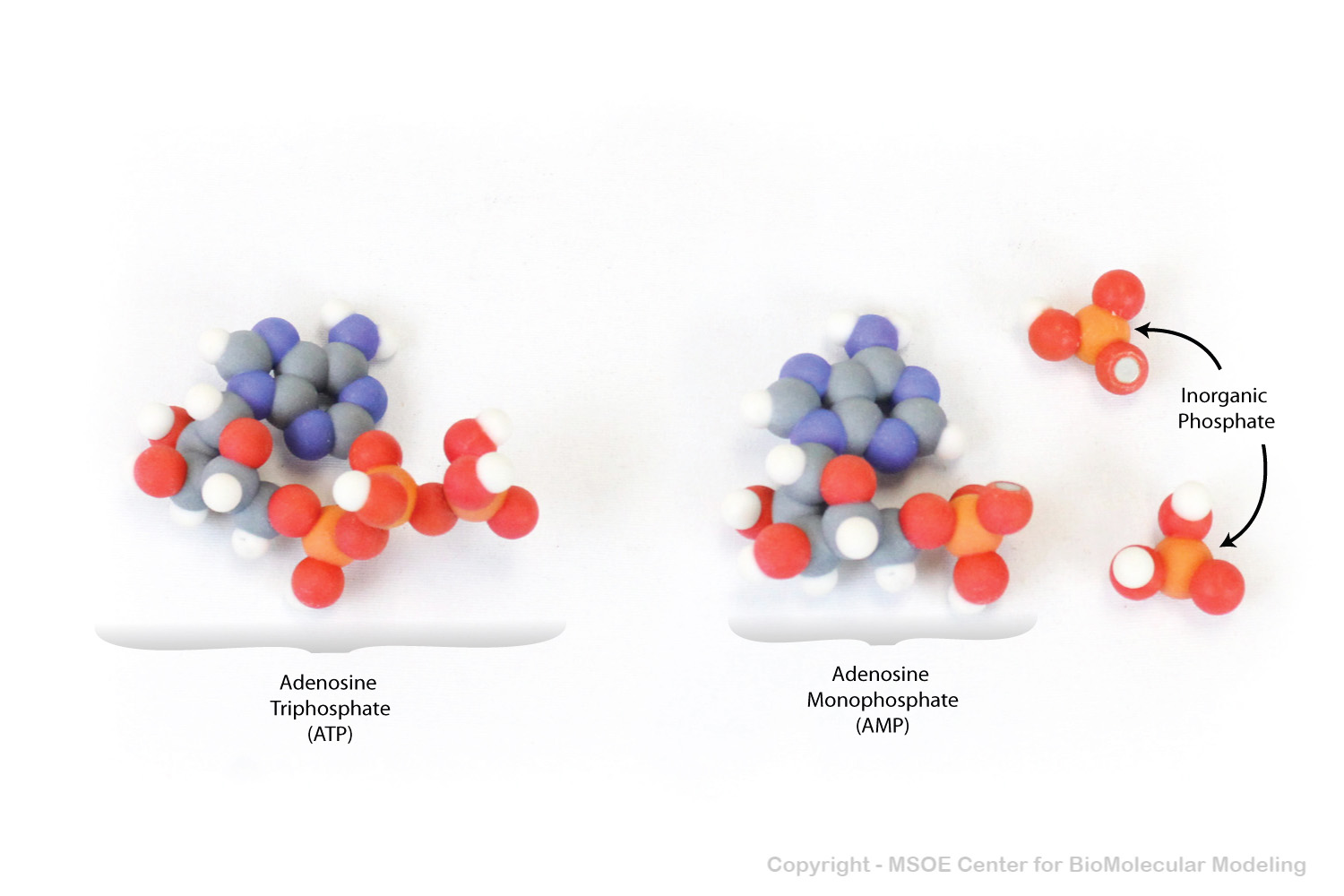


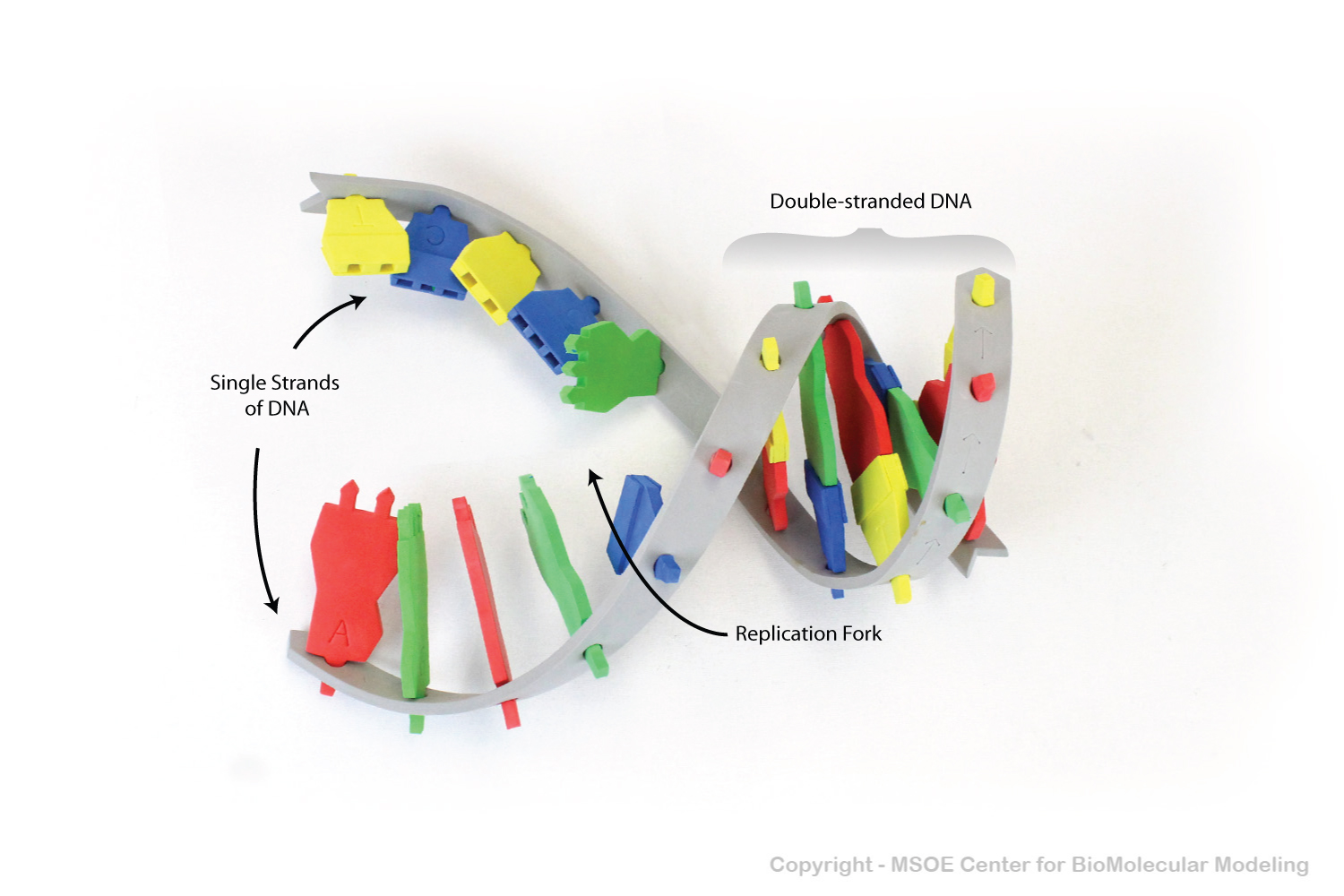

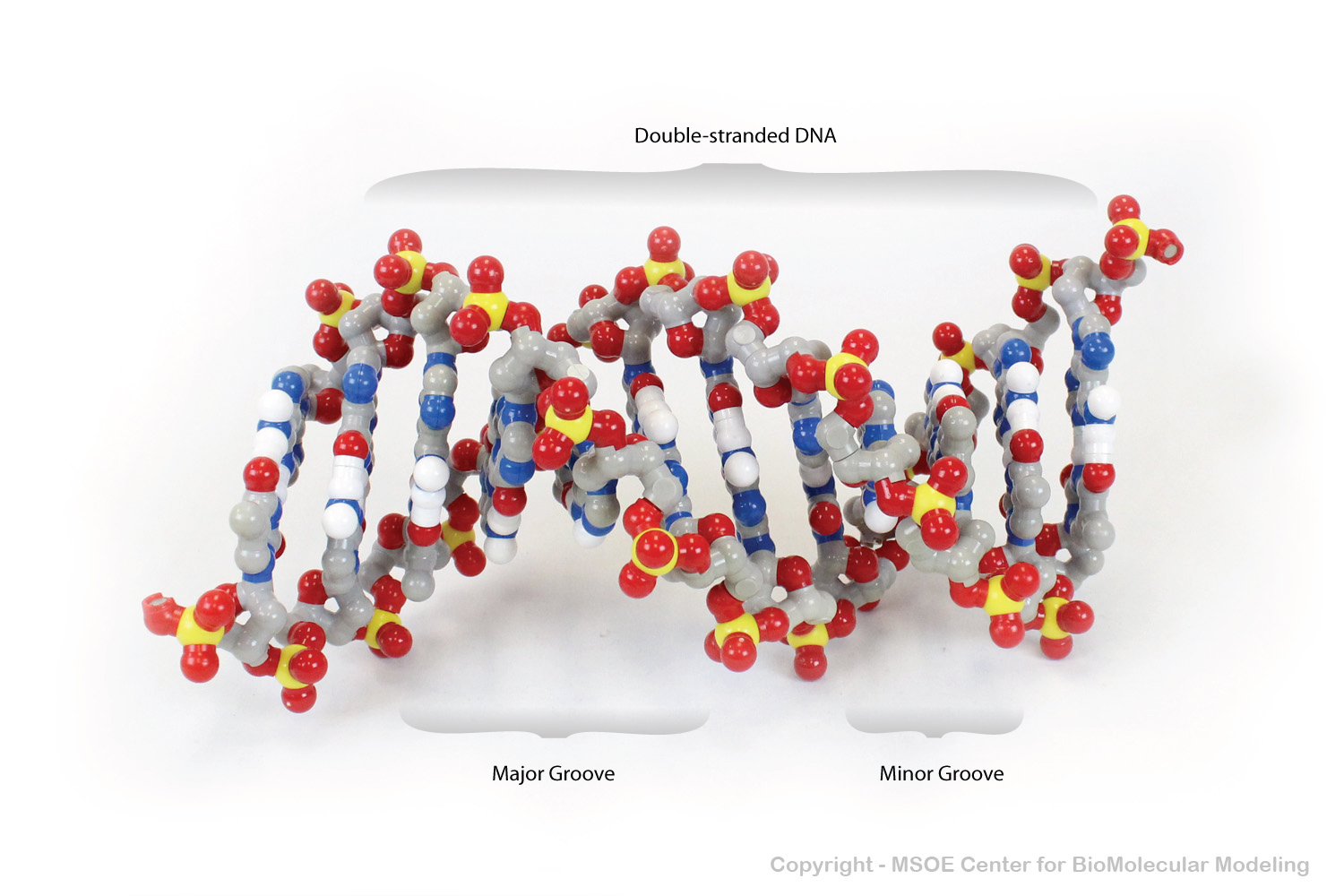
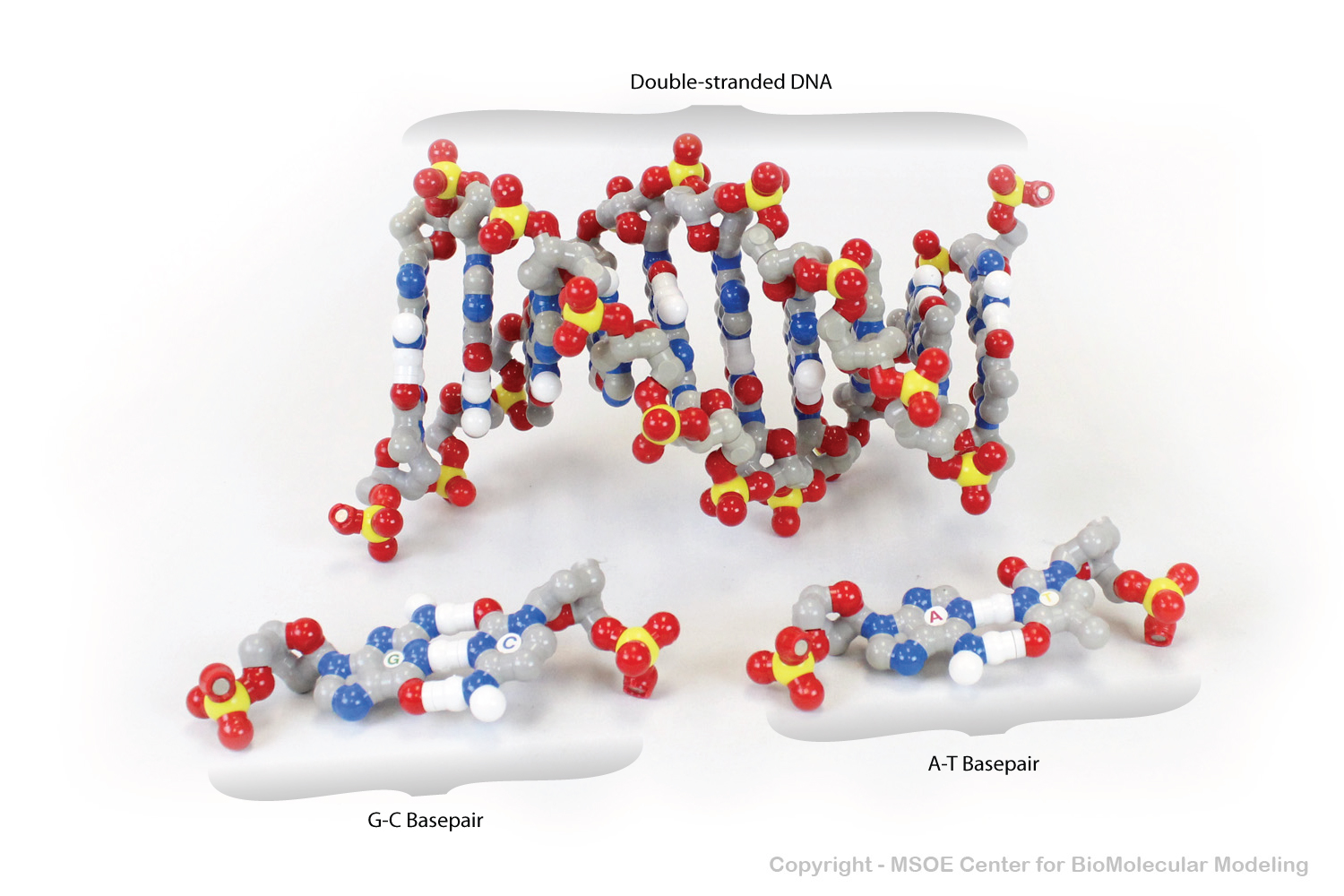
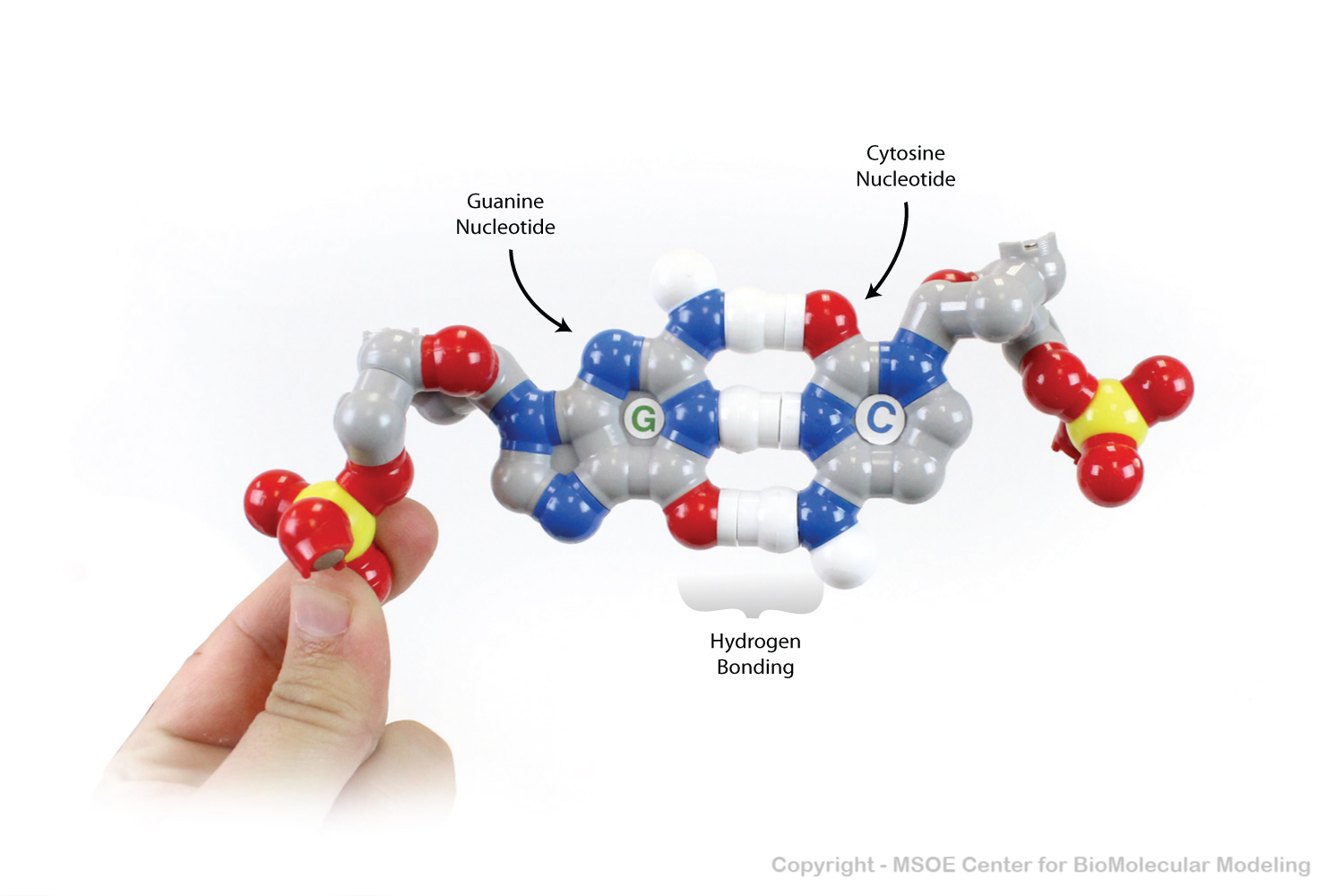
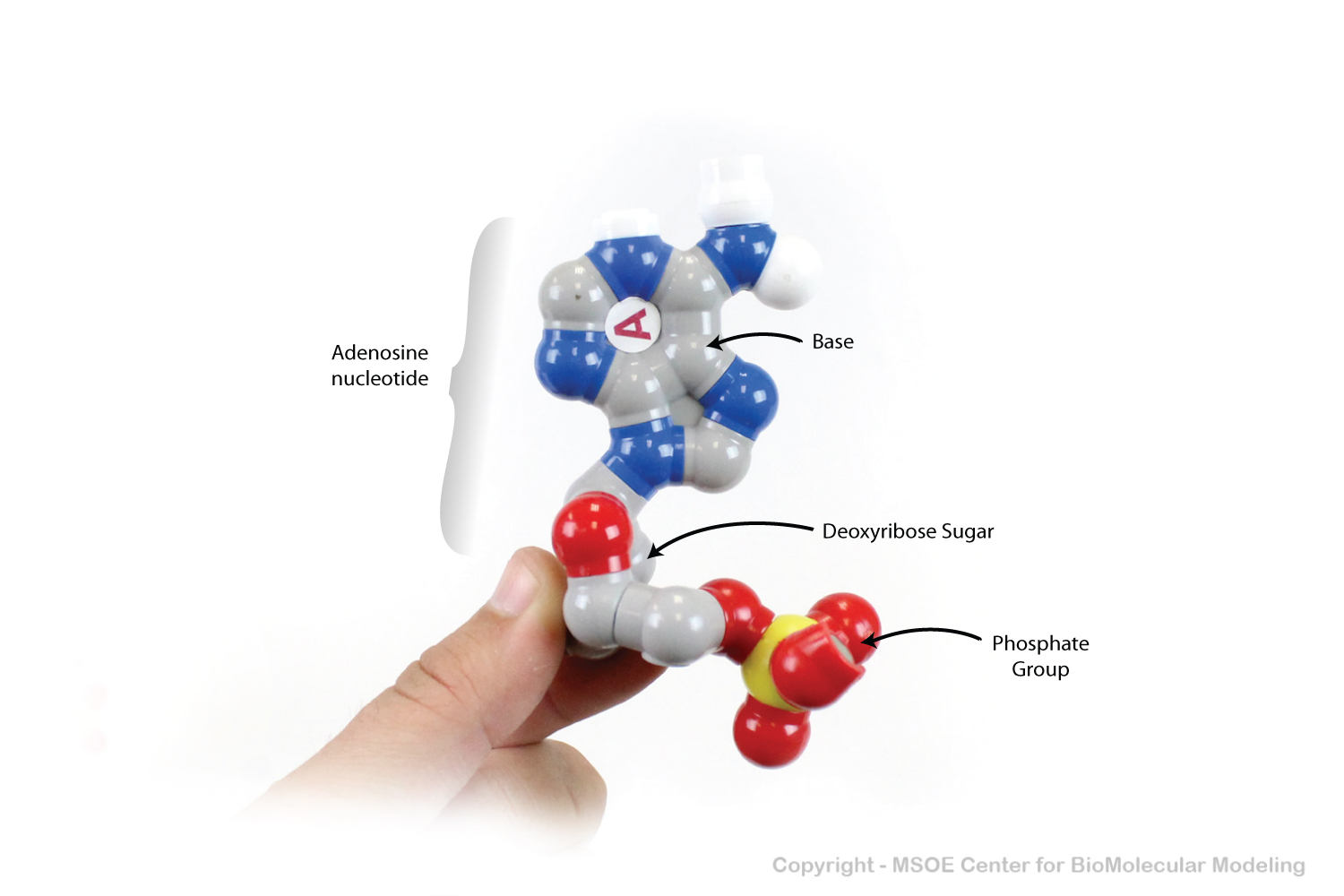
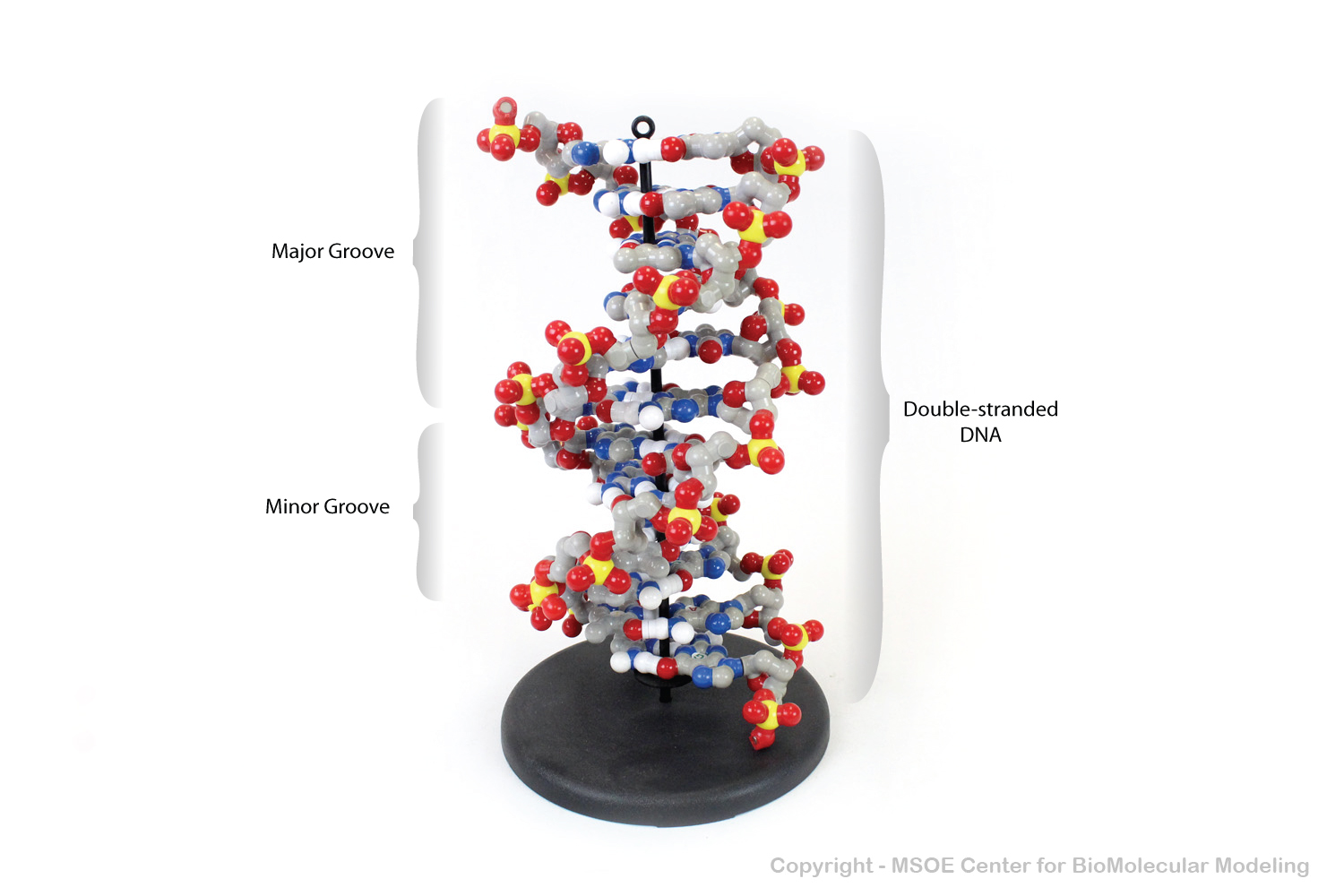
Standard B-form deoxiribonucleic acid (DNA) consists of two anti-parallel strands of nucleotides that form a right-handed double helix. DNA has a major (wide) groove and a minor (narrow) groove.
Standard B-form deoxiribonucleic acid (DNA) consists of two anti-parallel strands of nucleotides that form a right-handed double helix. DNA has a major (wide) groove and a minor (narrow) groove.
Unusual Z-form deoxiribonucleic acid (zDNA) consists of two anti-parallel strands of nucleotides that form a left-handed double helix; standard B-form DNA forms a right-handed double helix
Standard B-form DNA consists of two anti-parallel strands of nucleotides that form a right-handed double helix, while unusual Z-form DNA forms a right-handed double helix
Shown on the left is standard B-form DNA, which consists of two anti-parallel strands of nucleotides that form a right-handed double helix. Shown on the right is single-stranded section of DNA.
Healthy double-stranded DNA is relatively straight and consistent, while DNA segments with errors or mismatches tend to have kinks or bends, making them irregular and inconsistent.
This section of standard double-stranded DNA is shown in three display formats, including SA surface, spacefill and ball-and-stick formats .
Using specific sequences of DNA that form standard Watson-Crick base pairs, complex DNA lattices can be constructed.
Using specific sequences of DNA that form standard Watson-Crick base pairs, complex DNA lattices can be constructed.
This unusual di-nucleotide contains a looped backbone with two phosphodiester bonds connecting the two nucleotides.
Adenosine Triphosphate (ATP) is composed of a standard adenosine nucleotide with a total of three inorganic phosphate groups.
Adenosine Triphosphate (ATP) is composed of a standard adenosine nucleotide with a total of three inorganic phosphate groups. In this model, two of the phosphate groups can be detached to represent the various forms of AMP, ADP and ATP.
Standard B-form deoxiribonucleic acid (DNA) consists of two anti-parallel strands of nucleotides that form a right-handed double helix. DNA has a major (wide) groove and a minor (narrow) groove.
Standard B-form deoxiribonucleic acid (DNA) consists of two anti-parallel strands of nucleotides that form a right-handed double helix. This model is composed of foam pieces, allowing it to flex, uncoil and separate.
Standard B-form deoxiribonucleic acid (DNA) consists of two anti-parallel strands of nucleotides that form a right-handed double helix. This model is composed of foam pieces, allowing it to flex, uncoil and separate.
Ribozymes are ribonucleic acid (RNA) structures that have enzymatic capabilities. This example is composed of two short RNA chains with numerous base pairs holding the two chains together.
Deoxiribonucleic acid (DNA) consists of two anti-parallel strands of nucleotides that form a right-handed double helix. This model is composed of individual nucleotides that can be separated and reassembled to produce any sequence.
Deoxiribonucleic acid (DNA) consists of two anti-parallel strands of nucleotides that form a right-handed double helix. This model is composed of individual nucleotides that can be separated and reassembled to produce any sequence.
Individual DNA nucleotides can pair with their complimentary nucleotide, in this case cytosine (C) is pairing with guanine (G), to form a base pair. These base pairs are held together with hydrogen bonding.
Individual DNA nucleotides are composed of one phosphate group, one deoxiribose sugar and a nitrogenous base.
Deoxiribonucleic acid (DNA) consists of two anti-parallel strands of nucleotides that form a right-handed double helix. This model is composed of individual nucleotides that can be separated and reassembled to produce any sequence.





















